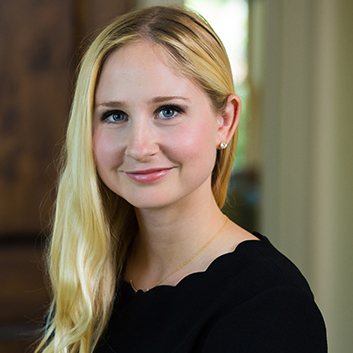Jessica McHugh: Companies that prioritize sustainability often experience a range of benefits, including reduced costs, higher brand value, increased access to capital, and talent retention, among others. The Sage Sustainable 50 is an annual list of the most sustainable companies in the US bond market, based on the Sage ESG Leaf Score® methodology. I’m Jessica McHugh, and today we’re talking with Emma Harper, Senior Research Analyst, about her report. So, Emma and I have been at Sage for what, almost six years, and this is the fifth year that you've put together this list. I was going to ask you, is it true that you lead the effort to score from a sustainability perspective 1,500 fixed income issuers from the Barclays Aggregate?
0:43
Emma Harper: So, the way that we do the analysis is we have a corporate side analysis, and we have a securitized analysis. And for our corporate side, we take into account the US Aggregate Bond Index as well as a US high yield index that brings in corporate names from both the investment grade and high yield universe. And through those two indexes, we shake out with about 1,500, issuers that are scored every quarter, on our Leaf Score system here at Sage.
Jessica McHugh: Wow, that sounds like an undertaking.
Emma Harper: It's definitely an effort, but has been going on for many years now, and has really become pretty comprehensive in terms of the analysis on the corporate end of things.
Jessica McHugh: So, you're doing this list on a quarterly basis. And then once a year, Sage publishes the top 50 issuers from this list. And you mentioned in the report using artificial intelligence for the first time in creating this list, which I want to talk about in a minute, because everybody's talking about using AI to make our work more efficient. But first, let's talk about what's on the list. So, this list that you put together is the most sustainable companies that issue bonds. What types of companies are on this list?
1:55
Emma Harper: They really come from a wide range of various industries and sectors. You know, we have some concentrations, obviously, within certain industries that are more prevalent on the list, one being insurance companies. And insurance companies make up about 12% of the companies on this list. So, it's a good number, and they actually come from different areas. They're not all from the US or not all from Europe. So, there's no heavy regional bias. The next biggest industries that these companies come from are software and banks. But one of the actually interesting things about the banks on the list is that they do come from Europe, all of the banks on the list.
Jessica McHugh: I see. What is it about the banking industry in Europe?
Emma Harper: Yeah. So there has to be a lot more regulation, at least right now in Europe surrounding sustainability practices. We highlighted some of this in the report, but there's robust regulatory frameworks, and they're constantly being reworked and built upon and added to, so regulators are really taking this kind of information seriously. They want to make sure the sustainability information that's coming from companies being reported from companies is factual, transparent, comparable. So, there's been a lot of regulation to support those practices of reporting. And so I think that alone has been enough to drive the focus towards sustainability in Europe, specifically in the banking sector, as opposed to United States, where this isn't regulated quite yet. We haven't really built, you know, what the regulations are going to be in terms of climate disclosures. We, we haven't actually put it in place yet. So you know, companies are doing what they're doing. They are reporting to different frameworks. And a lot of them are giving good transparent information. But it really hasn't been codified the same way, as it has in Europe at this point.
4:00
Jessica McHugh: So, there's a lot of similarities among the companies on the list. One is their credit ratings. And you noted this in the highlights for the report. So, for the most part, these companies are rated investment grade by Moody's and S&P, but then sometimes ESG ratings and credit ratings, they diverge. Could you tell us a little bit about why a company might rate highly in terms of sustainability, but then have a below investment grade credit rating?
Emma Harper: Yeah, I would say a lot of the credit rating decisions from what we've seen, have to do with kind of the capital structure of the company. How much debt there is, how much leverage there is in the cap structure. And so that can have a very large effect on the credit rating; versus when we're looking at the sustainability factors, we're looking at the financially material factors that are important to every industry, and how they're performing on those. And a good example that we highlighted was Iron Mountain. They're considered a sustainability outperformer they do really well in their financial and material sustainability factors. We highlighted certain factors that have to do with the data and information security that they have to undertake, given their business model. They have a really strong program, their business ethics and their compliance measures are pretty strong, their working conditions are fair and safe. So, they are high performance from a sustainability perspective, but they are fairly highly levered. They've taken on a lot of projects that have required a significant amount of cash. And so therefore, they have a good amount of debt on their balance sheet. Although we do think that it's, you know, a well-positioned company to be able to pay down the debt, they are rated as below investment grade, due to the amount of debt that they have in their structures.
5:52
Jessica McHugh: Okay, so let's go back to this idea about artificial intelligence. This is the first year that you've incorporated AI into your analysis of putting together this list. What type of AI did you use? And what were the advantages?
Emma Harper: We use an AI system that allowed us to pull in pertinent information to sustainability or business risks. So, it was a screen where we are able to look at companies’ responsible business risk, or their sustainability risks or opportunities that has happened within the last 90 days. And so that was the most important part. Oftentimes, ESG ratings are somewhat criticized for being backward looking and not having the most up to date information other than controversy analysis. And so, we wanted to take that and say, Okay, what's happening right now with these companies, either from a positive or negative perspective.
Jessica McHugh: So, the benefit of using this AI is that you got more real-time, up-to-date data to inform who would be on this list? Did having this information influence who made the cut?
7:06
Emma Harper: Actually it did because we had a number of sustainability leaders that are from different industries. And we wanted to see, okay, if we were going to narrow it down to just the top 50. We have a few more than that. And we need to see, Okay, are there some in this list where there's something that's happening, that's not really on the positive side of the ledger. And we did see that on a couple of them, namely, Clorox and Johnson Controls. These are two companies that are considered sustainability leaders within their industry, they do well in comparison to their peers on their different financially material factors. But both of them suffered pretty large-scale cyber-attack in recent times that affected their reporting on their earnings statements, that affected their supply chain. And being able to get their supplies out to you know, the stores, and so it did affect their actual operations in their company.
8:11
Jessica McHugh: Got it. So, using the AI helped to reveal some incidences.
Emma Harper: Technology helps you reveal other technology vulnerabilities, yes!
Jessica McHugh: And so are you going to start using the AI in your scoring quarterly of the 1,500.
Emma Harper: We're always looking at any sort of technology or any sort of information that can help us get an even deeper look into the analysis and the companies that we're looking at on a quarterly basis. So yes, there's possibilities for adding in technology along the way. We've added in different pieces of information, different sources of information as we've evolved with our scoring system. And so, this is something that we are constantly taking a look at and evolving. And so yes, I would say technology and availability of technology, including AI systems, is something that we're incorporating. And we'll continue to evolve and incorporate as we go along.
9:10
Jessica McHugh: So, Emma, is there anything else you'd like to highlight in this report that we didn't talk about?
Emma Harper: You know, we look at a lot of risk. We look at downside protection. We look at mitigation of these risks often in our analysis, but it's always nice to see the positive side of the story is the opportunities, the things that are happening that are exciting. I highlighted some of those in the report in terms of a couple of the companies that are doing really cool things with hydrogen or low carbon steel or even human capital initiatives like the rescaling that I talked about in the report from Workday. The one that I didn't get to talk about that I thought was really nice was from Colgate. They actually were doing a smile shame campaign where –
Jessica McHugh: Smile shame?
10:02
Emma Harper: Yes. So, there are parts of the world where there is unfortunately, smile shame, where people are ashamed to smile because they're embarrassed of maybe how their teeth look or their smile looks. And so, Colgate wanted to engage those customers or those stakeholders out there in the community who were experiencing smile shame, and are still experiencing style shame. And so, this was really focused on the Asian Pacific area. And this is an area where there tends to be, I guess, a greater amount of smile shame. And so, they were doing a program where, through AI, they were able to take people's smiles on social media and actually highlight them on like, an image of the packaging of Colgate. And it would be their actual smile, their actual teeth in the smile. And people were excited and it made them actually smile. And so, it was kind of a heartwarming campaign and something that they're looking to continue over a number of years.
Jessica McHugh: Well, thank you, Emma for joining us today. The report is called The Sage Sustainable 50 and it's out today. For more information visit sageadvisory.com.
Sage Advisory Services is a registered investment adviser that provides investment management services for a variety of institutions and high net worth individuals. This podcast is for informational purposes only and is not intended as investment advice or an offer or solicitation with respect to the purchase or sale of any security, strategy or investment product. Investors should make their own decisions on investment strategies based on their specific investment objectives and financial circumstances. All investments contain risk and may lose value. Past performance is not a guarantee of future results.
For additional information on Sage and its investment management services, please view our website at www.sageadvisory.com, or refer to our Form ADV, which is available upon request by calling 512.327.5530.




